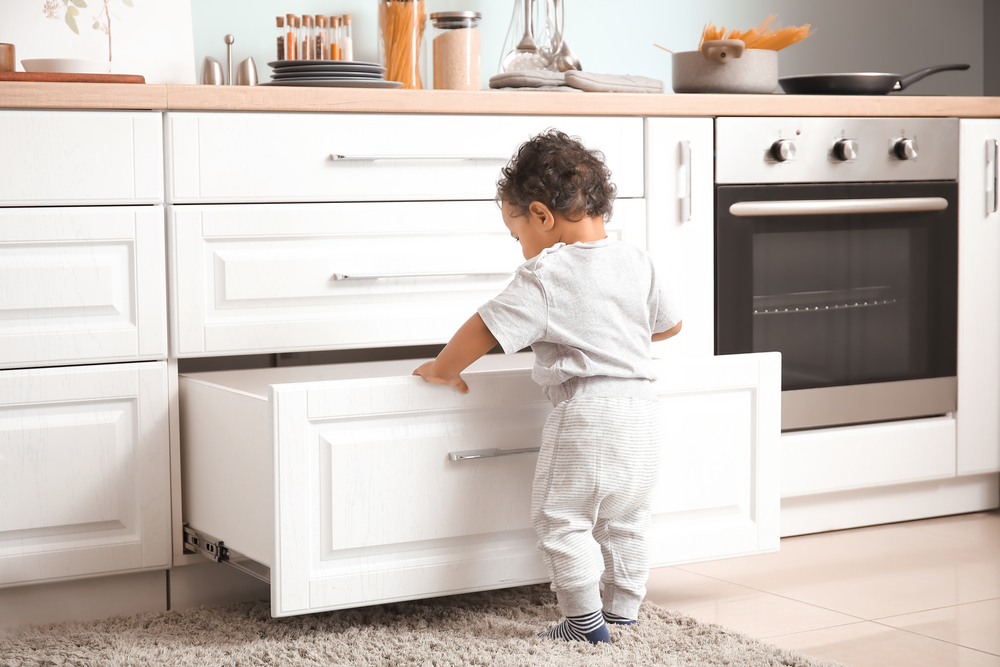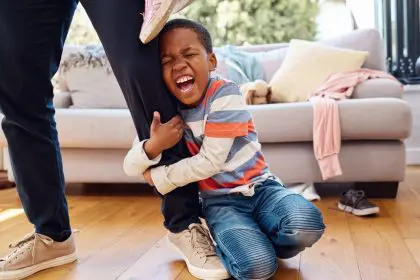Becoming a new parent is an exciting and rewarding journey, but it also comes with a unique set of challenges. One of the most important tasks for new parents is ensuring that their home is safe for their baby. Babyproofing your home might seem overwhelming, but with some careful planning and a few key strategies, you can create a safe environment for your little one. Here are five effective ways to babyproof your home.
1. Secure furniture and appliances
One of the first steps in baby-proofing your home is to secure heavy furniture and appliances. Babies are naturally curious and love to explore their surroundings, which can sometimes lead to accidents. To prevent furniture from tipping over, use wall anchors or brackets to secure bookshelves, dressers and other heavy pieces to the wall. Additionally, make sure that your television is mounted securely or placed on a stable surface.
Securing furniture and appliances tips:
- Use anti-tip straps for large furniture
- Mount flat-screen TVs on the wall
- Keep heavy items on lower shelves
- Regularly check the stability of furniture
By securing these items, you can prevent potentially dangerous situations and keep your baby safe as they start to crawl and walk.
2. Install safety gates
Safety gates are essential for keeping your baby away from hazardous areas in your home. Install gates at the top and bottom of staircases to prevent falls, and use them to block off rooms that are not babyproofed, such as the kitchen or bathroom. Choose sturdy gates with a locking mechanism that is difficult for a child to open.
Choosing and installing safety gates:
- Select gates that meet safety standards
- Opt for pressure-mounted gates for areas that don’t require permanent fixtures
- Use hardware-mounted gates for the top of stairs
- Ensure gates are tall enough to prevent your baby from climbing over
Safety gates provide a simple and effective way to create safe zones within your home, allowing your baby to explore without the risk of injury.
3. Cover electrical outlets and cords
Electrical outlets and cords can pose a significant risk to curious babies. To prevent electrical accidents, use outlet covers or safety plugs to block unused outlets. Make sure that any outlets within your baby’s reach are covered. Additionally, keep electrical cords out of sight and out of reach. Use cord organizers or wraps to bundle cords and prevent your baby from pulling on them.
Tips for covering electrical outlets and cords:
- Choose outlet covers that are difficult for children to remove
- Use sliding outlet covers for frequently used outlets
- Keep cords behind furniture whenever possible
- Use cord shorteners to eliminate excess cord length
Taking these precautions can help prevent electrical shocks and other injuries, ensuring a safer environment for your baby.
4. Lock cabinets and drawers
Cabinets and drawers often contain items that are dangerous for babies, such as cleaning supplies, sharp objects and medications. To keep these items out of your baby’s reach, install childproof locks on all cabinets and drawers that are accessible to your baby. There are various types of locks available, including magnetic locks, sliding locks and adhesive locks. Choose the type that best suits your needs and the layout of your home.
Effective cabinet and drawer locking strategies:
- Use magnetic locks for a hidden, childproof solution
- Opt for adhesive locks for a no-drill installation
- Install sliding locks for double-door cabinets
- Regularly check locks to ensure they are functioning properly
By securing cabinets and drawers, you can prevent your baby from accessing harmful substances and objects, keeping them safe from potential injuries.
5. Create a safe sleep environment
Ensuring that your baby has a safe sleep environment is crucial for their overall safety. To create a safe sleeping space, use a crib that meets current safety standards and has a firm mattress that fits snugly. Remove any soft bedding, pillows and toys from the crib, as these can pose suffocation risks. Instead, use a fitted sheet and consider using a sleep sack to keep your baby warm.
Creating a safe sleep environment tips:
- Place the crib in a safe location, away from windows and cords
- Use a crib with adjustable mattress heights to prevent falls
- Regularly check the crib for loose screws or broken parts
- Follow the “back to sleep” guideline by placing your baby on their back to sleep
A safe sleep environment is essential for reducing the risk of sudden infant death syndrome (SIDS) and ensuring that your baby gets a good night’s sleep.
Managing babyproofing your home
Babyproofing your home is a vital task for new parents, but it doesn’t have to be overwhelming. By following these five strategies — securing furniture and appliances, installing safety gates, covering electrical outlets and cords, locking cabinets and drawers and creating a safe sleep environment — you can create a safe and secure home for your baby. Taking these steps will give you peace of mind and allow your baby to explore and grow in a safe environment.
Remember, babyproofing is an ongoing process. As your baby grows and becomes more mobile, you’ll need to continually reassess and adjust your home to meet their changing needs. By staying vigilant and proactive, you can ensure that your home remains a safe haven for your little one.
Additional tips for babyproofing:
- Regularly check for small objects that could pose a choking hazard
- Keep houseplants out of reach, as some may be toxic
- Use corner protectors on sharp furniture edges
- Install window guards to prevent falls
By incorporating these additional tips, you can further enhance the safety of your home and provide a secure environment for your baby’s growth and development. Babyproofing may require some effort and adjustments, but the peace of mind and safety it brings are well worth it.
This story was created using AI technology.










